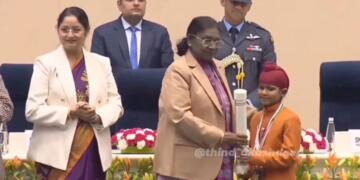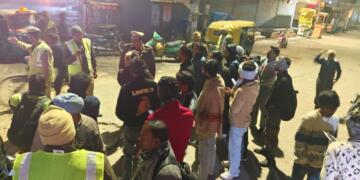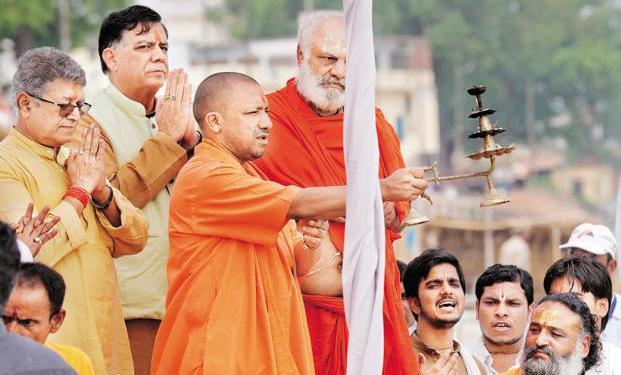Religious tourism is one of the most popular forms of tourism in the country, as lakhs of pilgrims visit the shrine of Vaishno Devi in Jammu every year. The Amarnath Yatra is made by millions of people every year despite all the hurdles they face in the way. Even though religious tourism has enormous potential, previous governments have never tried to create an infrastructure for it to grow and thrive. The baggage of secularism carried out by Congress governments stopped them from encouraging Hindu religious tourism. On the other hand, they gave subsidies for Haj pilgrimage and provided state support to Christian missionaries as well. However, the fact remains that majority of the population of the country is Hindu and if Hindu religious tourism would have been promoted in the past, a billion dollar industry could have been created out of it.
The Yogi government in Uttar Pradesh is trying to make the state religious hub. The state is home to the birthplace of Lord Rama and many other sites which are of major importance in Ramayana and Mahabharata. The Kumbh Mela 2019 was one of the grandest in history. The Yogi government left nothing to chance in organizing this historic event and invested 4,200 crore rupees. The investment and the impeccable preparation by the Yogi government yielded 1.2 lakh crore rupees in revenue.
The investment in infrastructure has unlocked the potential of religious tourism. Indian Railways launched special trains on Ramayana circuit and it got a huge response with all tickets pre-booked. These trains take people on a journey from Ayodhya to Tamil Nadu and then visitors could travel Sri Lanka to complete the Ramayana tour. Kedarnath Mandir, one of 12 Jyotirlinga which represents a devotional representation of Bhagwan Shiv has been revived by Modi government after Uttarakhand and got record response from visitors since then.
According to research by CSDS, pilgrimage is very popular in India among the people of all faiths. The families across the economic strata are very religious which is contrary to western experience where religiously inversely related to economic status. The religiosity of the people in India has increased over the years with growing wealth. The average expenditure on pilgrimage and other religious activity has grown over the years.
Only some places like Taj Mahal or Gateway of India are the limelight of the tourism industry. There are vast numbers of unexplored sites of historical and religious value that are rotting in ignorance because there is a lack of infrastructure to reach these destinations, while no marketing efforts are made to popularize them. India has 36 World Heritage Sites that are recognized by UNESCO as of August 2017. These are places of cultural or natural heritage as described in the UNESCO World Heritage Convention, established in 1972. The Tourism sector generated US$230 billion or 9.4% of the nation’s GDP in 2017 and supported 41.622 million jobs, which amounts to around 8% of its total employment. The major problems faced by Indian tourism are the low level of formalization within the industry and a lack of ATM penetration among other things.
Modi government is very serious about developing India as a major tourist destination in the world, and the upcoming years will see the creation of many jobs in the industry. According to the World Tourism Ranking, India received 14.6 million international tourists in 2016, which is way below its true potential. France, a small country in southern Europe, bags 82.6 million international tourists annually, almost 6 times more than that of India.


































